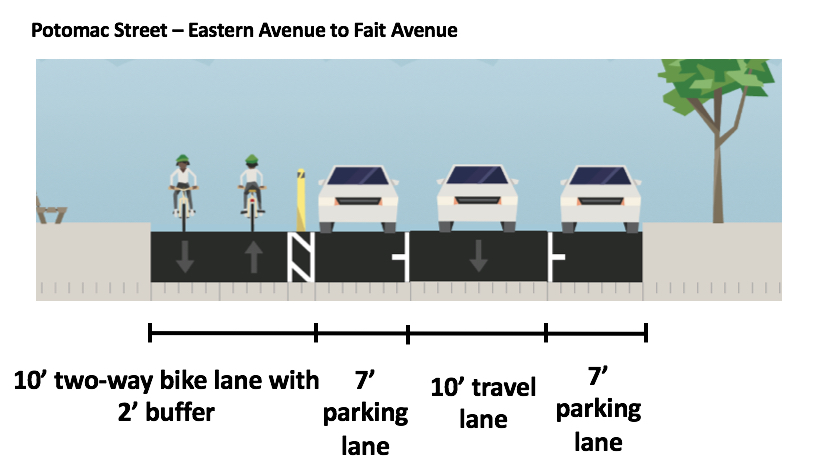Yair Flicker, Bikemore Board President, Mark Edelson, Attorney, Jed Weeks, Bikemore Policy Director, Mark Stichel, Attorney, and Liz Cornish, Bikemore Executive Director
A legal team led by Mark Edelson, Mark Stichel, and supported by Bikemore was granted a temporary restraining order halting demolition of the Potomac Street protected bike lane. The temporary restraining order was entered late Friday following a hearing before the Circuit Court for Baltimore City. The team filed on behalf of Baltimore residents Marisa Saville and Steve Iannelli.
The mostly complete Potomac Street protected bike lane had been slated for removal by the Mayor’s office Monday morning, June 12, 2017.
“Our elected leaders and civil servants have worked tirelessly to attract federal and state funding for this project,” said Edelson. “Unfortunately, the city’s shortsighted decision put this funding and efforts at risk. Our city was already once forced to walk away from federal funding for transit and improved mobility. We will not allow that to happen again.”
Documents filed today by attorneys on behalf of the plaintiffs and Bikemore
“The Mayor has a responsibility to champion policy decisions that weigh equally the city’s stated goals of sustainability, public health, and safety,” Liz Cornish, Bikemore Executive Director said. “Bikemore has provided the Mayor with numerous recommendations to this aim. Bikemore had hoped this would have been resolved another way.”
33% of residents in Baltimore lack access to a car. This number grows to over 70% in our city’s most disadvantaged neighborhoods. Safe, comfortable bike facilities like the one designed on Potomac Street are the key to improving mobility to the thousands of residents who need it.
“My son and I use the Potomac Street lane to get to and from sports practice at Du Burns Arena,” said plaintiff Marisa Saville. “Before installation of the protected lane, we only felt safe riding illegally on the sidewalk. We’re thrilled to know our family has a few more days of safe transportation until a hearing hopefully makes that safety permanent.”
In the coming days the court will schedule a hearing on the request for preliminary injunction. Help us continue the #fightforbikes by setting up a reoccurring monthly donation today.







